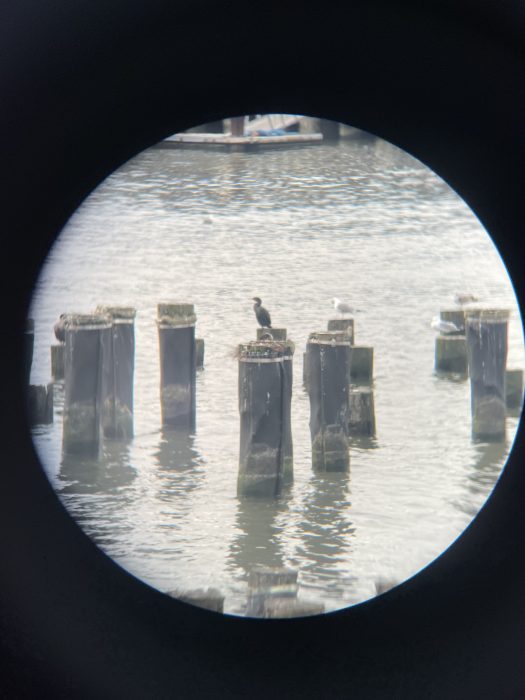Tell me what you think about Lee Harvey Oswald, and I’ll tell you how you vote. Every year since 1963, Gallup has polled Americans on the assassination of President John F. Kennedy. In the weeks after Kennedy’s killing, less than 30 percent of Americans believed that Oswald acted alone and 52 percent believed that “others were involved in a conspiracy.” In the 2023 poll, those numbers were 29 percent and 65 percent.
Only 20 percent of those who did not attend college believe that Oswald was a lone assassin; 73 percent of them believe in a conspiracy. Republicans align with this, 25 percent versus 71 percent. Independents line up with Republicans, 25 percent versus 68 percent. College graduates, who now constitute nearly half the population, are twice as likely to believe that Oswald acted alone (41 percent), but a clear majority (57 percent) believes in a conspiracy. Democrats agree with them, 39 percent versus 55 percent. Only among the fifth of Americans with postgraduate degrees are the conspiracists in a minority (44 percent).
Exactly 50 percent of the smart set believe that Oswald did it alone. Not all postgrads are liberals, but most liberals are postgrads. They were also more likely to believe it when federal agencies and the media told them that a man can become a woman and that COVID-19 came from bats in a wet market. They were more likely to believe that Donald Trump is a Russian plant, that Hunter Biden is innocent, that Joe Biden was not senile, and Kamala Harris is not a halfwit. They now believe that USAID was doing just fine before Elon Musk looked at the books.
On the Kennedy assassination as on much else, liberal Democrats live in an epistemological bubble. They departed from the American consensus on Oswald after 2013—just as affluent liberals and their informational environment were parting company with reality. So you are not necessarily mad if you doubt the official explanation for JFK’s killing. You are not necessarily a conspiracy theorist, either, though it should be said that while not all JFK assassination theorists are conspiracy theorists, all conspiracy theorists are JFK assassination theorists. None of them have theories about the assassinations of Presidents Lincoln, Garfield, and McKinley.
If not Oswald alone, then who and how? Borgata: Clash of Titans advances an unofficial explanation: The Mob did it.
This is the second volume in Louis Ferrante’s “Borgata Trilogy,” a history of the American Mafia. Mr. Ferrante knows his subject. An erstwhile employee of the Gambino crime family, he served eight-and-a-half years for robberies and hijackings before he sank to writing books. His first volume, Rise of Empire, described how the American Mafia stayed close to its roots in the feudal and post-feudal societies of Sicily and southern Italy, while also becoming distinctively American. Over the first half of the 20th century, the Mafia rose from a fragmented and local concern into a corporation that combined the monopolistic mentality, and tightly enforced hierarchies and terms of membership, of a medieval guild, with the freebooting, flexible, and infinitely ambitious spirit of 20th-century American capitalism.
Clash of Titans describes the trouble that came with success. Like The Apogee in John Julius Norwich’s “Byzantium” trilogy, or Pax Britannica in Jan Morris’s eponymous trilogy, Clash of Titans is the centerpiece of a triptych. The pace slows as the hinge of the grand narrative turns. Key scenes take on the detail of portraiture. Evidence is assayed, motives are assessed, and considered conclusions are advanced: “Dickie Palatto died in mysterious circumstances; he drowned in three feet of water, which might not have been odd if he was only two feet tall.”
Ferrante is a fluid raconteur. Even his picture captions are gripping: “Johnny Dio socks a photographer during a break at the Rackets Committee.” His clashing titans are the Kennedy brothers, Jack and Bobby, and the criminal fraternity headed in Florida by Santo Trafficante, in Louisiana by Carlos Marcello, and in Chicago by Sam Giancana. The road to Dallas begins with Bobby Kennedy using the McClellan Committee (a.k.a. the “Rackets Committee”) to launch his political career by taking down Jimmy Hoffa, the more than necessarily mobbed-up president of the Teamsters union. Hoffa backed Nixon in the 1960 presidential elections. The mafia bosses backed JFK, funneling “millions of dollars” into the West Virginia primary and, it seems, fixing the Illinois vote in 1960 (“gross and palpable fraud,” said the Chicago Tribune).
“It’s rather like watching the Borgia brothers take over a respectable north Italian city,” Britain’s prime minister Harold Macmillan said when the Kennedy brothers arrived in Washington, D.C.
Jack appointed Bobby as attorney general, even though Joseph Kennedy Sr.’s string-pulling had failed to win Bobby a spot at Harvard Law and Bobby had never fought a case in court. Bobby built up a “hit list” of 2,300 mobsters, beefed up the Justice Department’s racketeering section by 400 percent, and mobilized every possible branch of the federal government against the Mob. “That rat bastard, son-of-a-bitch,” Giancana reportedly ranted to Trafficante, “we broke our balls for him and gave him the election, and he gets his brother to hound us to death.”
Bobby Kennedy, a “little fart” in Sen. Lyndon Johnson’s estimation, wanted to make a big noise. He cut corners in his zeal. In April 1961, INS agents grabbed Carlos Marcello, put him and a companion on a plane and flew them to Guatemala. Expelled to El Salvador, they were put onto a bus and dumped in a jungle in Honduras. They staggered 17 miles to the nearest human settlement in “silks suits and alligator shoes,” guided most of the way by two local boys with machetes. Aided by a bribe to the Dominican dictator Rafael Trujillo, and possibly by Sen. Russell Long of Louisiana, Marcello returned to the United States more than somewhat peeved.
The bosses wanted to undo the Cuban revolution of 1959 and recover their offshore assets. So did the CIA. Their discreet collaboration ended, at least officially, on JFK’s orders after the fiasco of the Bay of Pigs invasion. This completes the upstage shadows: betrayed Cubans, betrayed mobsters, deniable CIA and FBI freelancers such as David Ferrie and Guy Banister doing deniable things with undeniably bad people.
“If the mob and the government worked together in a plot to kill Fidel Castro, why then should it shock us that they worked together to take out who they believed was another mutual enemy?” Ferrante asks. It shouldn’t. If it does, that’s because Hollywood, and especially the Godfather movies, have cast a sepia shroud over the sordid, murderous reality of the Mafia.
Not all of the whispers from upstage are hearsay, as when Marcello is reported as saying in 1962 that killing Bobby Kennedy would not be enough: “What good dat do? You hit dat man and his brother calls out the National Guard. No, you gotta hit de top man.” An FBI wiretap caught mob associate Willie Weisberg telling Philadelphia don Angelo Bruno that he wanted to kill the president: to “stab and kill the fucker” in the White House.
J. Edgar Hoover may have been right when he called Lee Harvey Oswald a “lone nut.” You had to be a nut, or a communist, to defect to the Soviet Union at the height of the Cold War. You had to be lonely to want to come back. But loneliness and nuttitude are not motives. All the other lone nuts had a motive. James Earl Ray, a white Southerner, shot Martin Luther King because he opposed civil rights. Sirhan Sirhan, a Palestinian, shot Robert F. Kennedy because Kennedy supported Israel. John Hinckley shot President Reagan because he wanted to impress Jodi Foster. Mark David Chapman shot John Lennon because he wanted to emulate Holden Caulfield. We don’t yet know Thomas Matthew Crooks’s motive for trying to kill President Trump in August 2024. It’s about time we did.
We don’t know Oswald’s motive. One reason is that Jack Ruby shot him two days after JFK’s assassination. Another is that although Oswald was interrogated for 12 hours, Ferrante writes, “no audio, video, or stenographic recordings were made.” This is “an extremely odd omission for an investigation into one of the most important and consequential murders in human history.” Also odd is that during his disturbed adolescence in New Orleans, Oswald lived with and worked for Charles “Dutz” Murret, who was Carlos Marcello’s bookmaker, and joined the Civil Air Patrol as a cadet, which is how he came to be photographed with David Ferrie, a captain in the Patrol. Small world.
We know more about Jack Ruby. The Warren Commission concluded there was no “significant link between Ruby and organized crime.” Yet Ruby was a career criminal from Chicago. An FBI informant since 1959, with links to Marcello and Trafficante and their men, Ruby went to Dallas for Sam Giancana as a “mafia-police” liaison. Ferrante, more expert in these matters than Earl Warren, observes, with italics for emphasis, that “the mafia does not allow men to maintain close ties to the police unless the men are corrupting the cops on behalf of the mob.”
Ruby ran bars and strip clubs in Dallas. The local police were regulars. It is inexplicable that Ruby, an “armed mobster with a criminal record who had absolutely no valid reason to be anywhere” near Oswald, was able to wander around the Dallas police station for hours without being challenged or thrown out. Actually, it is explicable. Ferrante finds it obvious that Ruby was granted access to the police station by a police officer. It is hard to disagree. Ferrante also adduces the 100-plus tipoffs that the FBI received in the week after Kennedy’s killing, linking Oswald and Ruby, and Ruby and David Ferrie. Ferrie admitted his ties to Marcello, but denied he knew Oswald, though a photograph shows them together.
It is possible that Oswald acted alone. It is possible that he believed he was acting alone, but wasn’t. It is possible that he realized this before he too was murdered. It is possible that he knew something but not everything about the involvement of other parties, which is why he declared himself to be the “patsy” when he was arrested. The penumbra of possibilities and associations around the JFK killing is unique. Nothing like it attends the murders of Gandhi, MLK, RFK, or John Lennon. Mr. Ferrante avoids overstepping his facts.
What we can say with certainty is that Ruby, a middle-ranking mobster, got into the police station with Oswald, whose interrogation left no record and whose pre-assassination activities remain obscure. We can also say that Oswald and Ruby were highly likely to have known each other and that both were, as we now say, already “known to the authorities.”
We are accustomed to hearing “known to the authorities” whenever a terrorist carries out an atrocity. We are also accustomed to learning that the authorities knew the perpetrator not just as a criminal, but also as an informant. We have become accustomed to the idea that, as the interwar theorists of airpower once said, “the bomber always gets through.” This has corroded our trust in the police, and especially in the security agencies which offer a deal—your privacy for your safety—only to fail to keep up their end.
People were more innocent about these things in 1963. You can see why those in charge of the agencies would have seen keeping it that way as in the national interest. You can also see, as the failure to intercept the 9/11 attacks showed, that interagency competition and general incompetence allow disasters to happen, regardless of what the authorities know beforehand. This failure in turn leads to the most common kind of cover-up, the covering of the posterior.
America was not the same after JFK’s killing. Things were never the same for the Mafia, either, after the 1960s. Frank Sinatra retired, standards of dress declined, and the Racketeer Influenced and Corrupt Organization Act of 1970 gave the federal agencies an instrument that RFK, who was two years dead by then, had always wanted. But RFK had lost his taste for hunting the mob after his brother’s murder. In a further oddity, he did not push for “any investigation into his brother’s death.”
Nicholas Katzenbach, who served as JFK’s deputy attorney general and President Johnson’s attorney general, wondered if that was because “Bobby was worried that there might be some conspiracy, and that it might be his fault. … It might very well have been that he was worried that the investigation would somehow point back to him.” Shades of Michael Corleone at the end of Godfather II, brooding alone by the dark waters where his brother was shot.
Borgata: Clash of Titans: A History of the American Mafia: Volume 2 of the Borgata Trilogy
by Louis Ferrante
Pegasus Books, 432 pp., $29.95
Dominic Green is a Wall Street Journal contributor and a fellow of the Royal Historical Society.
The post The Mob Wanted Kennedy Dead. But Did They Do the Unthinkable? appeared first on .








